3/ neither was this lecture on observation, measurement & quantification proper (here’s a reading list on the topic )but on inference, aka how econs derive more general trends (in time and space) from limited data sets
4/Background is quantitative work done in interwar:
-estimating impact of fertilizers through ag experiments
-measuring business cycles (more later)
-measuring supply & demand curves. The mess it was is described in Morgan's landmark book (cambridge.org/core/books/his…)
-estimating impact of fertilizers through ag experiments
-measuring business cycles (more later)
-measuring supply & demand curves. The mess it was is described in Morgan's landmark book (cambridge.org/core/books/his…)
6/ It took Lenoir, Working bros & others to explain that, from set of q/p data, if many supply shifts (as in ag), you in fact estimate demand curve, & vice-versa
Wright’s idea of actively using “curve shifters” gave birth to Instrumental variables method economics.mit.edu/files/18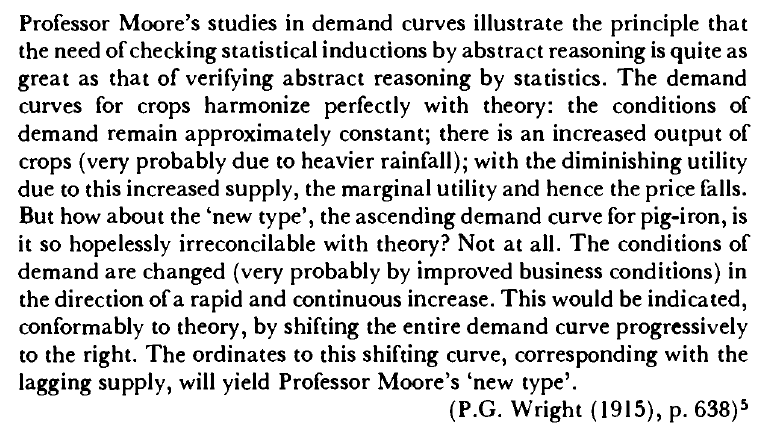
Wright’s idea of actively using “curve shifters” gave birth to Instrumental variables method economics.mit.edu/files/18

7/Econs were using panel data or time series (taken from nascent national accounting) & regressions WITHOUT probabilistic foundations.
Econ data were not produced through sampling, independently & under homogeneous conditions, so using notion of distribution seemed meaningless
Econ data were not produced through sampling, independently & under homogeneous conditions, so using notion of distribution seemed meaningless
8/ Haavelmo brought conceptual reorientation in Econometrica-length 44 paper fitelson.org/woodward/haave… Lots of nice punchlines –like coining term natural experiment or empirical research as guard against 'futility'– but breakthrough was justification for probabilistic foundations 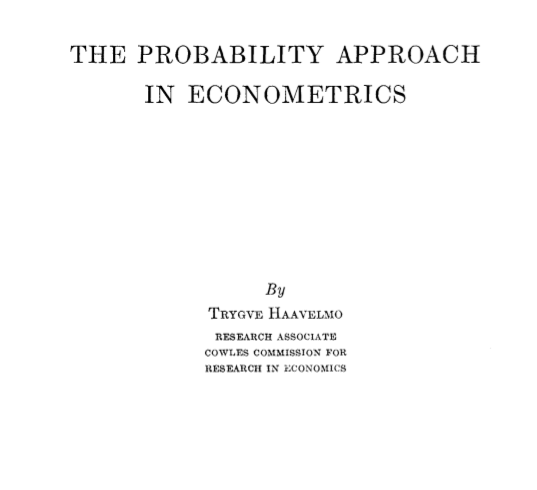



10/ Some historians have argued such probability turn was thus instrumental, not epistemological (
). Might be true of Koopmans (trained as a physicist), but not of Marschak, whom I document held genuine stochastic worldview (beatricecherrier.files.wordpress.com/2019/03/4-mars… )
11/ Program taken up by Cowles econs, w/ econometricians, following Mann & Wald developing non-biased estimators (from LS to LIML and back global.oup.com/academic/produ… ch3) & econs hunting “structural relations” to be estimated, continuing tradition of looking for “autonomous”.... 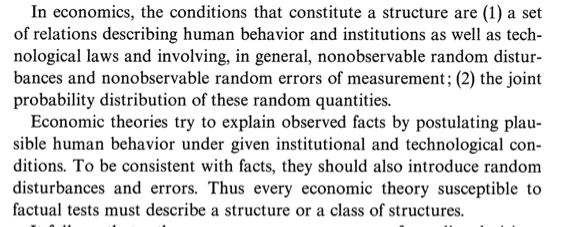

12/...(Frisch/Haavelmo’s term) invariant econ relationships based on individual behavior - akin to laws of physics jstor.org/stable/1821116.
Overall goal was clear: prediction, for sure, but prediction to help find best policy, Marschak explained (see 1946 letter to Wald below)
Overall goal was clear: prediction, for sure, but prediction to help find best policy, Marschak explained (see 1946 letter to Wald below)

14//Relationships b/w Cowles & NBER initially friendly, but in 1940s, they competed for SSRC & Rockefeller foundation’s funding. Private attempts at dismissing other’s method went public when Koopmans published famous review of Burns-Mitchell’s book elaine.ihs.ac.at/~blume/koopman…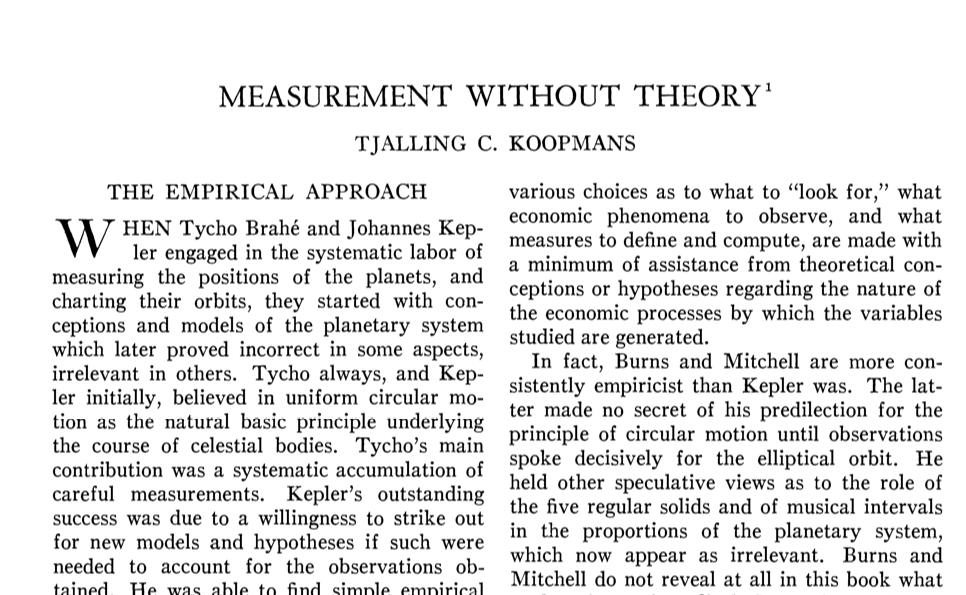
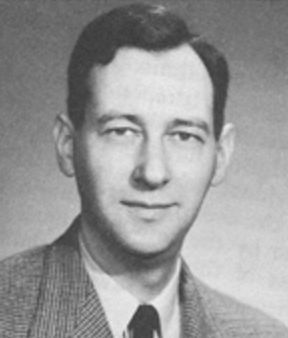


16/As Mitchell had just died & Burns didn’t want to get his hands dirty (which would eventually land him the Fed chair seat), defending NBER fell to young unknown economist: Rutledge Vining jstor.org/stable/1927853…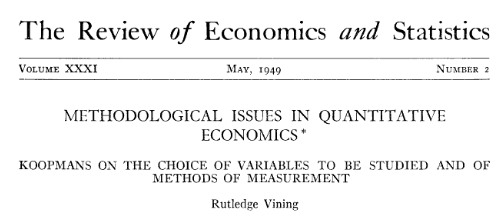

18/ Vining sought advice to another active NBER-related econ who widely enjoyed crashing Chicago Cowles seminars: Friedman, who went after symbol of successful Cowles method applied: Klein’s model of US economy below (full story elsevier.com/books/a-histor… & halshs.archives-ouvertes.fr/halshs-01364812) 

19/ Friedman argued that exhaustive depiction of econ system was impossible task, that model should be “engine” to make sense of reality, not "depiction." He used Christ’s 1951 demonstration that prediction from naïve models were as good as Klein’s as weapon against Cowles method
20/ In spite of sustained resistance (also counted Leontief, Kuznets & time-series econometricians like Orcutt, Sargan & Hendry ), Cowles “structural econometrics” became dominant because:
1) was embodied in macroscale models adopted by central banks (osf.io/preprints/soca… )
1) was embodied in macroscale models adopted by central banks (osf.io/preprints/soca… )
21/
2) scientific appeal
3) PSID-type of data based on sampling, meaning micro data got closer to Haavelmo's idea
3) standardized tests perceived as shield against ideology, entrenched through development of econometric software from 1960s onward (autobox.com/pdfs/50YEARS.P… )
2) scientific appeal
3) PSID-type of data based on sampling, meaning micro data got closer to Haavelmo's idea
3) standardized tests perceived as shield against ideology, entrenched through development of econometric software from 1960s onward (autobox.com/pdfs/50YEARS.P… )
22/ yet Cowles method challenged in 1970s
1. flaship macromodels failed to predict stagflation
2. diverging interpretation of error terms revealed fault lines : measurement errors? Missing variables? Stochastic shocks driving business cycles, as was reconceptualized by macro..
1. flaship macromodels failed to predict stagflation
2. diverging interpretation of error terms revealed fault lines : measurement errors? Missing variables? Stochastic shocks driving business cycles, as was reconceptualized by macro..
23/ Diverging views of stochastic character of econ relations seen in various words used for ε: error, residual, disturbance, random shock (see Qin chapter 8
and Hoover & Duarte papers.ssrn.com/sol3/papers.cf… )
24/3. a priori restrictions on equations to allow identification perceived as unwarranted, even ideological. Throw econometrics into crisis epitomized by famous papers by Leamer, who pushed for Bayesian specification (jstor.org/stable/1803924… ) & Hendry (jstor.org/stable/2553385) 

(note for non-economists: to put it simply, pb was w/ what a priori assumptions econs made to ensure they were estimating what they intended – not supply instead of demand as in my intro exemple, not effect of family wealth instead of skills on return on education)
25/ strategies to solve empirical crisis diverged
Micros, led by Ashenfelter’s students & others, drew upon experiments performed by Ross & others since 1970s (nber.org/papers/w14356), “natural experiments” allowed by institutional providing nice instruments to isolate causes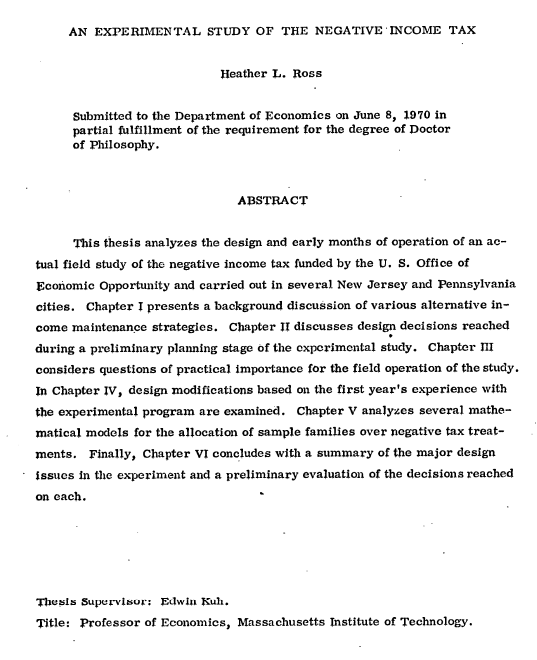
Micros, led by Ashenfelter’s students & others, drew upon experiments performed by Ross & others since 1970s (nber.org/papers/w14356), “natural experiments” allowed by institutional providing nice instruments to isolate causes

26/ John Singleton & @matthewpanhans document & explain rise of quasi-experiments here (papers.ssrn.com/sol3/papers.cf… ), later branded as “credibility revolution” bringing “transparency” to policy evaluation by Angrist & Pischke (aeaweb.org/articles?id=10… ) 

27/structuralist strike back aeaweb.org/issues/126. Ensued “structural vs reduced-form” debate echoing older arguments abt how theoretical assumption endanger internal validity/ credible identification, yet lack thereof threaten external validity (ability to generalize results)















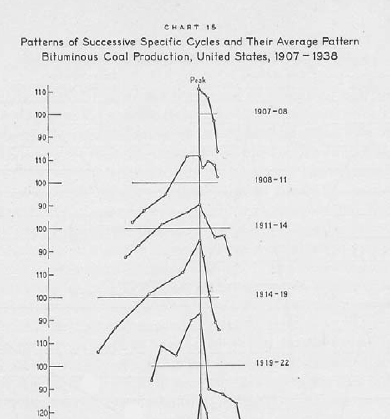
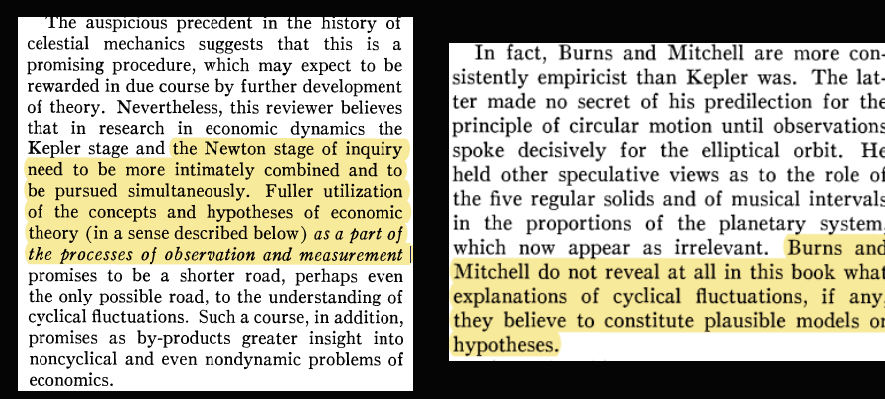


1 Comments:
景気変動と日本経済: 世界・日本・地域の景気分析 - 231 ページ
https://books.google.co.jp/books?id...
Shōji Tahara - 1983 - スニペット表示
こうしたミッチュルを中心とする^182 尺の研究に対しては,クープマンスによって 1947 年に「理論なき計測」として厳しい批判がなされたが, 1^8211 表 11-1 ^85:なの景気指様リスジョン. では以前と同じ景気変動の実証分析の態度を取り続け,その中から ...
景気変動と日本経済: 世界・日本・地域の景気分析 - 231 ページ
https://books.google.co.jp/books?id...
田原昭四 - 1983 - スニペット表示
長期遡及性, 2 景気転換点に対する規則的先行性, 3 不規則変動が激しくないこと, 4 景気変動が顕著に判別できること, 5 過去の景気循環に対する対応性のよさ,の 5 つが設定された.こうしたミッチヱルを中心とするの研究に対しては,クープマンスによって 1947 ...
社会科学大事典 - 第 5 巻 - 214 ページ
https://books.google.co.jp/books?id...
1968 - プレビューは利用できません - 他の版
經濟學硏究: 一橋大學硏究年報 - 第 16 巻 - 69 ページ
https://books.google.co.jp/books?id=8v4...
1972 - スニペット表示 - 他の版
... Theory", 7ossy、Asszzoss,October 1952, p.417 (4)しかしクープマンスは、統計上の制約は技術的に克服できるとしている。 ... "Measurenent without Theory" Mesess7 Zooss Szssos, August 1947 pp 161 ー 2 一橋大学研究年報経済学研究 3 一一二 6 ...
コメントを投稿
<< Home